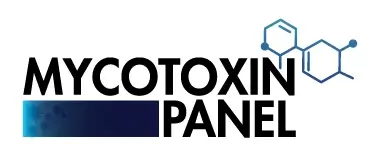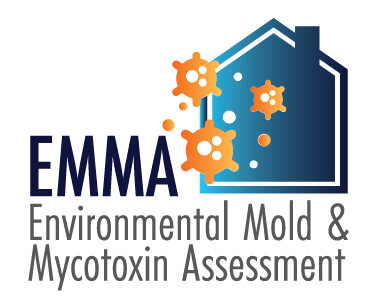Ensuring Compliance With Rules: the Duty of Mycotoxin Checking in High Quality Control
Making certain compliance with strict guidelines is critical for preserving food safety, and the duty of mycotoxin testing in quality control can not be overemphasized. Mycotoxins, toxic substances produced by certain molds, posture considerable health dangers, making their detection crucial in food manufacturing. Adherence to regulative criteria, such as those set by the FDA and EU, requires durable screening techniques and innovations to identify and evaluate these pollutants. By applying extensive screening procedures, companies can avoid possible wellness dilemmas, prevent costly recalls, and preserve customer trust. The complexities of these screening processes increase important questions concerning their efficiency and effectiveness.
Recognizing Mycotoxins
Recognizing mycotoxins is basic to ensuring the top quality and safety and security of agricultural items. Mycotoxins are poisonous secondary metabolites generated by specific species of fungi, commonly located in foodstuffs such as seasonings, grains, and nuts. These substances can arise at different stages of the food production process, from pre-harvest to storage space, and posture substantial health threats to both pets and human beings (Mycotoxin testing Services). One of the most well-known mycotoxins consist of aflatoxins, ochratoxins, trichothecenes, and fumonisins, each related to details environmental problems and fungal types.
The visibility of mycotoxins in foodstuff can bring about chronic and intense wellness problems, consisting of liver damage, immune reductions, and cancer causing impacts. Their detection and metrology are crucial elements of high quality control in farming and food markets. The complexity of mycotoxin contamination demands a multifaceted method, employing advanced analytical techniques such as liquid chromatography, mass spectrometry, and enzyme-linked immunosorbent assays (ELISA) By understanding the sources, types, and results of mycotoxins, stakeholders in the farming industry can much better execute preventative steps and alleviate threats, ensuring more secure usage for end-users. This understanding develops the bedrock upon which reliable mycotoxin administration practices are developed.
Governing Specifications for Mycotoxins
Having actually established a foundational understanding of mycotoxins and their effect on food safety, it is necessary to evaluate the regulatory criteria controling their visibility in agricultural products. Governing criteria for mycotoxins are necessary since they specify permissible restrictions, making sure food safety and security and securing public wellness. Different international and national agencies have actually established these limitations based upon detailed threat evaluations.
The Codex Alimentarius Commission, a global body developed by the FAO and WHO, offers guidelines and optimum permitted levels for different mycotoxins in food and feed. The Codex has established limitations for aflatoxins in peanuts, maize, and dried figs, among other commodities. These criteria are often embraced or adjusted by individual nations to fit their specific demands.
In the European Union, Policy (EC) No 1881/2006 stipulates optimum degrees for a number of mycotoxins, such as aflatoxins, ochratoxin A, and deoxynivalenol, in different food. Likewise, the United State Food and Drug Administration (FDA) has established activity levels for mycotoxins like aflatoxins in assets such as grains and nuts.
Adherence to these regulatory standards is essential for keeping market gain access to, consumer count on, and public health and wellness. Non-compliance can bring about considerable financial losses and health risks, emphasizing the relevance of rigid mycotoxin testing methods.
Examining Methods and Technologies

ELISA is commonly appreciated for its fast and economical testing capabilities, making it perfect for site high-throughput environments. It relies on antibodies to find details mycotoxins, offering outcomes in a reasonably short time structure. Nonetheless, its level of sensitivity may be restricted compared to more innovative strategies.
HPLC, on the other hand, stands out in providing quantitative evaluation with high accuracy and precision. It divides intricate mixes into private components, making it very effective for recognizing and measuring multiple mycotoxins concurrently - Mycotoxin testing Services. This method, while a lot more resource-intensive and lengthy than ELISA, offers a higher degree of reliability

LC-MS stands for the pinnacle of analytical uniqueness and sensitivity. Integrating the separation power of liquid chromatography with the discovery capacities of mass spectrometry, LC-MS can discover also trace levels of mycotoxins. This approach is crucial for confirming the existence of mycotoxins in forensic and regulatory contexts, guaranteeing conformity with rigid safety standards.
Implementing Examining Procedures

Integrating these advanced testing techniques right into an extensive high quality control framework necessitates a well-structured technique to implementing screening procedures. To attain this, companies should first perform a complete risk assessment to recognize prospective mycotoxin contamination factors within the supply chain. This analysis notifies the growth of a tailored testing approach that addresses certain susceptabilities.
Next, developing standardized tasting treatments is critical. Regular sampling makes certain that examination outcomes are trusted and agent of the whole set (Mycotoxin testing Services). Abiding by standards from regulatory bodies, such as the FDA or EFSA, helps preserve conformity and boosts the integrity of the screening procedure
Educating employees is an additional crucial element. Staff needs to excel in both example collection and the procedure of screening tools. Routine training sessions and certification programs can guarantee that team participants remain upgraded with the current methods and regulatory changes.
Advantages of Mycotoxin Evaluating
Mycotoxin testing provides numerous benefits that substantially boost the safety and security and top quality of food and feed products. Primarily, it functions as a vital control action to stop contaminated goods from reaching the consumer market, thereby guarding public wellness. By identifying and evaluating mycotoxins such as fumonisins, aflatoxins, and ochratoxins, manufacturers can guarantee that their items meet stringent governing criteria, thus preventing prospective my response lawful repercussions and linked prices.
In addition, mycotoxin testing contributes to the financial stability of food and feed sectors by lessening the risk of large item remembers. The ability to find and isolate polluted batches early in the manufacturing procedure lowers waste and prevents the economic losses connected with damaged brand track record. Additionally, it promotes consumer count on and loyalty, as consumers are significantly aware of food security problems and demand better requirements.
The implementation of normal mycotoxin testing likewise promotes finest techniques within agricultural and production markets. By sticking to strenuous testing methods, firms can enhance their quality assurance procedures, boost operational effectiveness, and make sure the regular manufacturing of safe, high-quality products. Finally, the benefits of mycotoxin testing are multifaceted, adding to public health and wellness, economic stability, and industry honesty.
Conclusion
Mycotoxin testing is crucial in making sure conformity with governing requirements, thus maintaining food safety and quality assurance. By methodically discovering dangerous mycotoxins, this technique assists alleviate wellness risks, stop lawful effects, and stay clear of monetary losses connected with product recalls. Applying robust screening protocols cultivates consumer count on and self-confidence in food security methods, inevitably sustaining the honesty and credibility of food companies. Hence, mycotoxin screening stays an essential component of modern-day food safety and security monitoring systems.
Making sure conformity with stringent regulations is critical for maintaining food safety, and the duty of mycotoxin screening in high quality control can not be overemphasized.In the realm of mycotoxin screening, advanced modern technologies and techniques are crucial in guaranteeing food safety and security and regulatory compliance.Mycotoxin screening uses numerous advantages that considerably boost the security and high quality of food and feed products.Mycotoxin screening is essential in making sure conformity with governing standards, thus keeping food safety and security and quality control. Therefore, mycotoxin testing remains an important part of modern-day food safety and security management systems.